Located in the Pacific Ocean around 600 miles off the coast of Ecuador, the Galapagos Islands are famed for their extraordinary diversity of plant and animal species.
Famous for their rugged, volcanic landscapes and stunning, white sand beaches, visitors to the archipelago are also often surprised to discover that this area also plays host to an entire world of novel and exotic fruits.
Ecuador is one of the world’s leading banana producers, whilst melons, mangoes, pineapples, papaya and kiwis, amongst others, are also plentiful. But while these are all delicious, familiar fruits, we can usually pick them up during our weekly shopping trip.
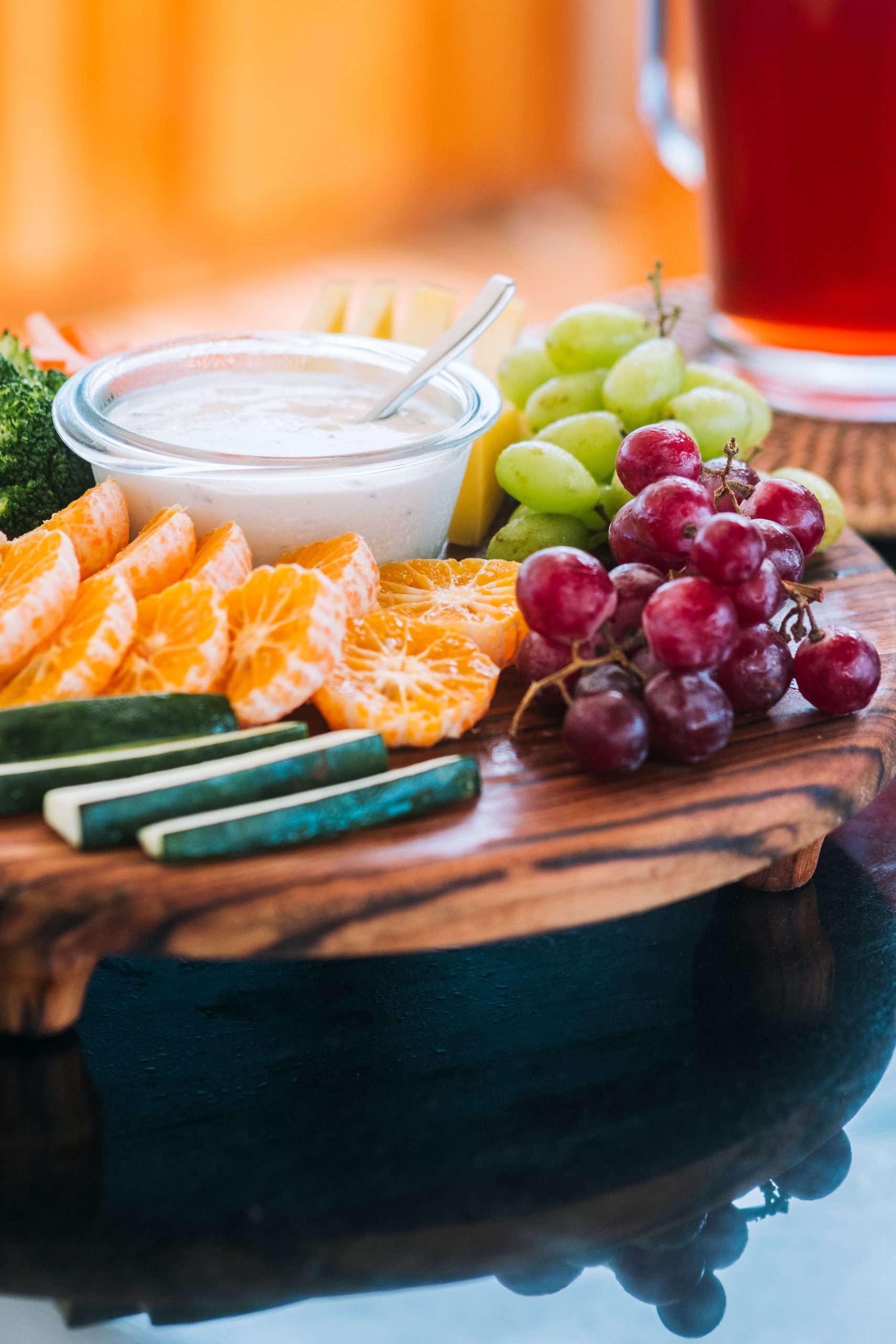
There are many other unusual, tropical fruits that you may never have come across which you certainly won’t find gracing the shelves of your local supermarket.
Below, we shine a light on just some of the delicious native fruits – many of which may well be unfamiliar to people who do not hail from this part of the world – you may encounter on an Ecoventura voyage and how our culinary team incorporates them into the menus on board our fleet of Relais & Chateaux luxury expedition yachts.
Guava and guayaba

Ecuador is home to the guava and the guayaba, which, although they sound similar, are unrelated. The Ecuadorian guava is a hard, pod-shaped, cotton-fleshed fruit containing inedible black seeds and sweet pulp, while the vitamin C rich guayaba is the better-known and more popular guava fruit – a small, round, tart citrus fruit containing pink or yellow flesh. It can be eaten raw and its juice is delicious; it often forms the basis of many local sweet treats. Due to its high pectin content, guava makes excellent jams and jellies.
Guanabana (soursop)
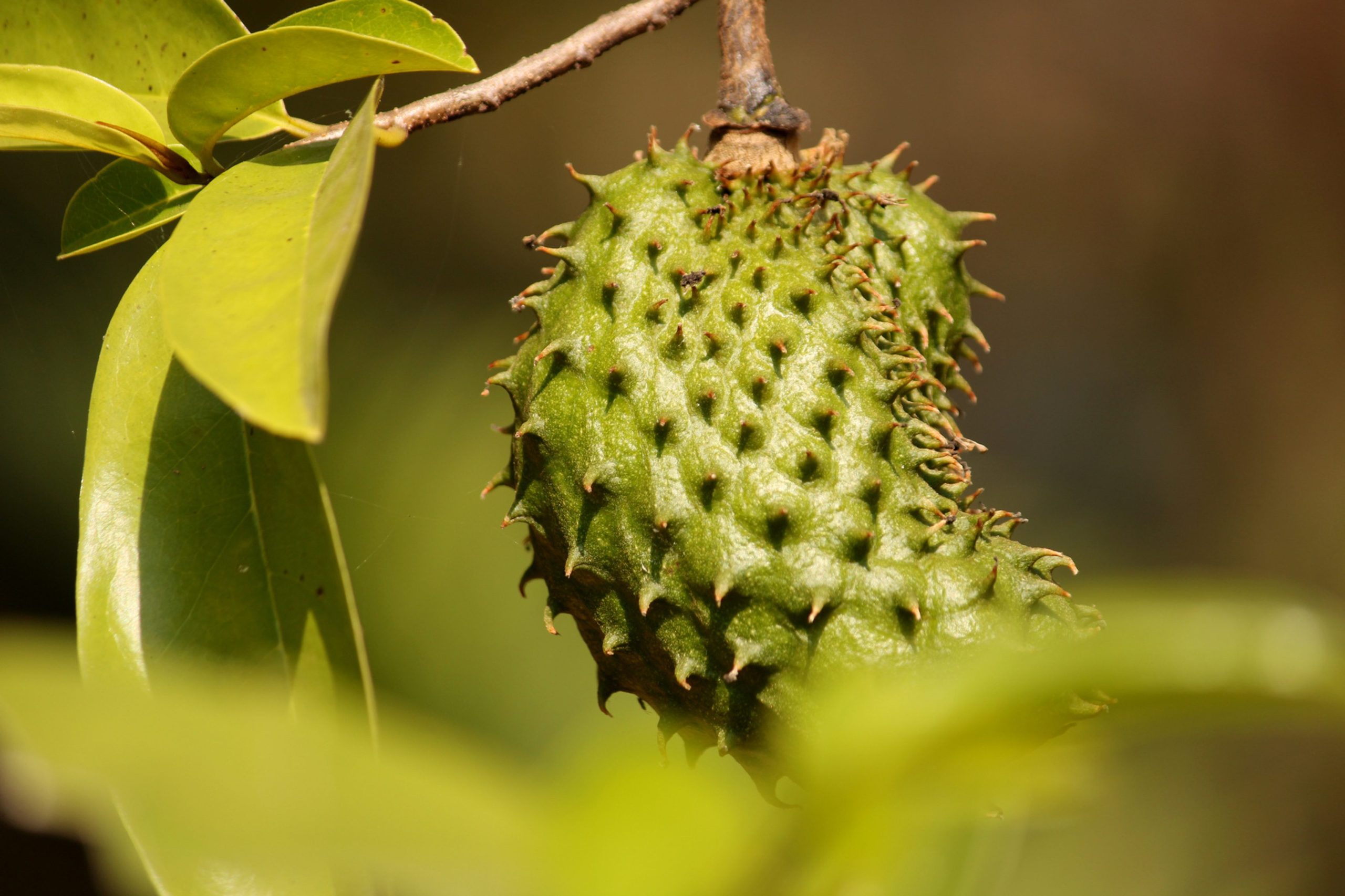
The national fruit of Ecuador is the melon-sized guanabana, often known as soursop. Flavorsome, versatile and bursting with health benefits, the white-fleshed guanabana is often described as tasting milky, sweet and sour. With a scent not dissimilar to pineapple, the guanabana combines the texture of banana with the taste of strawberries, apples and citrus fruits. Guanabana is rarely eaten raw, although its pulp (once black seeds are removed) is a popular ingredient in juices and smoothies, sweets, sorbets and ice creams.
Maracuya (passion fruit)
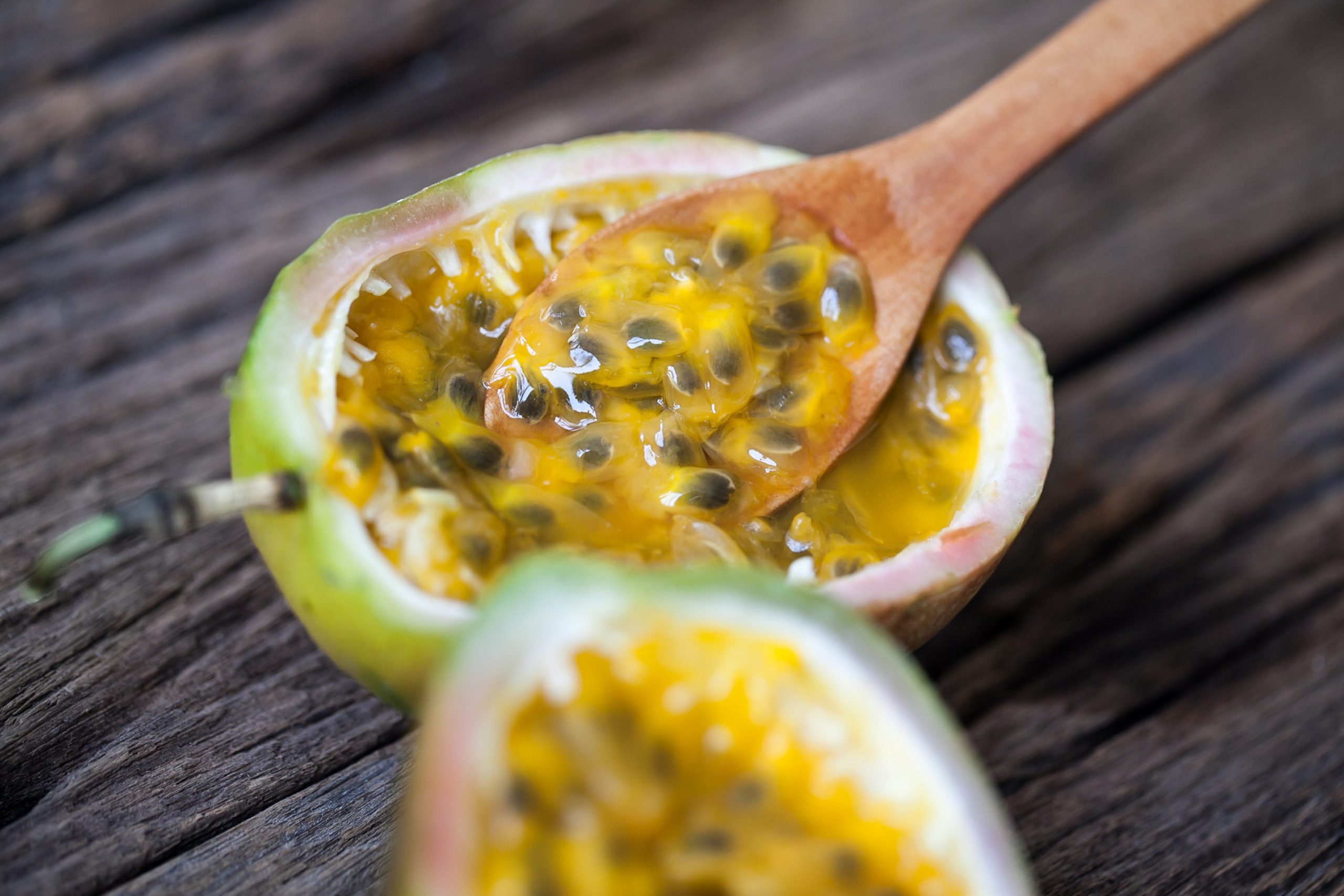
The maracuya, adorned with its unique purple blossoms, is technically a berry, yet it is also known as the Ecuador passion fruit. It has a bright yellow-greenish, rather than a standard purple, skin, that turns wrinkly when ripe. Like its more common purple counterpart, it contains dark brown edible seeds that are surrounded by a jelly-like pulp, but it has a stronger, tarter, distinctly tropical flavour, said to be similar to an underripe mango, but delicious nonetheless.
Mora (hill raspberry)
Conditions in the Galapagos are perfect for the mora, the island’s most invasive weed that was introduced for agricultural purposes in the 1970s. But while the dense spiny thickets of this plant can be problematic, the plump fruits are popular, undeniably delicious and rich in vitamin C, calcium, and phosphorus. Mixed simply with sugar and water, mora makes delicious juice. Our chefs are suppliers with pre-prepared fruit pulp, which can be made into smoothies, jams, jellies, ice cream, and pastries and pair beautifully with lemon, vanilla, chocolate, coffee, and salted caramel.
Tomate (tree tomato)
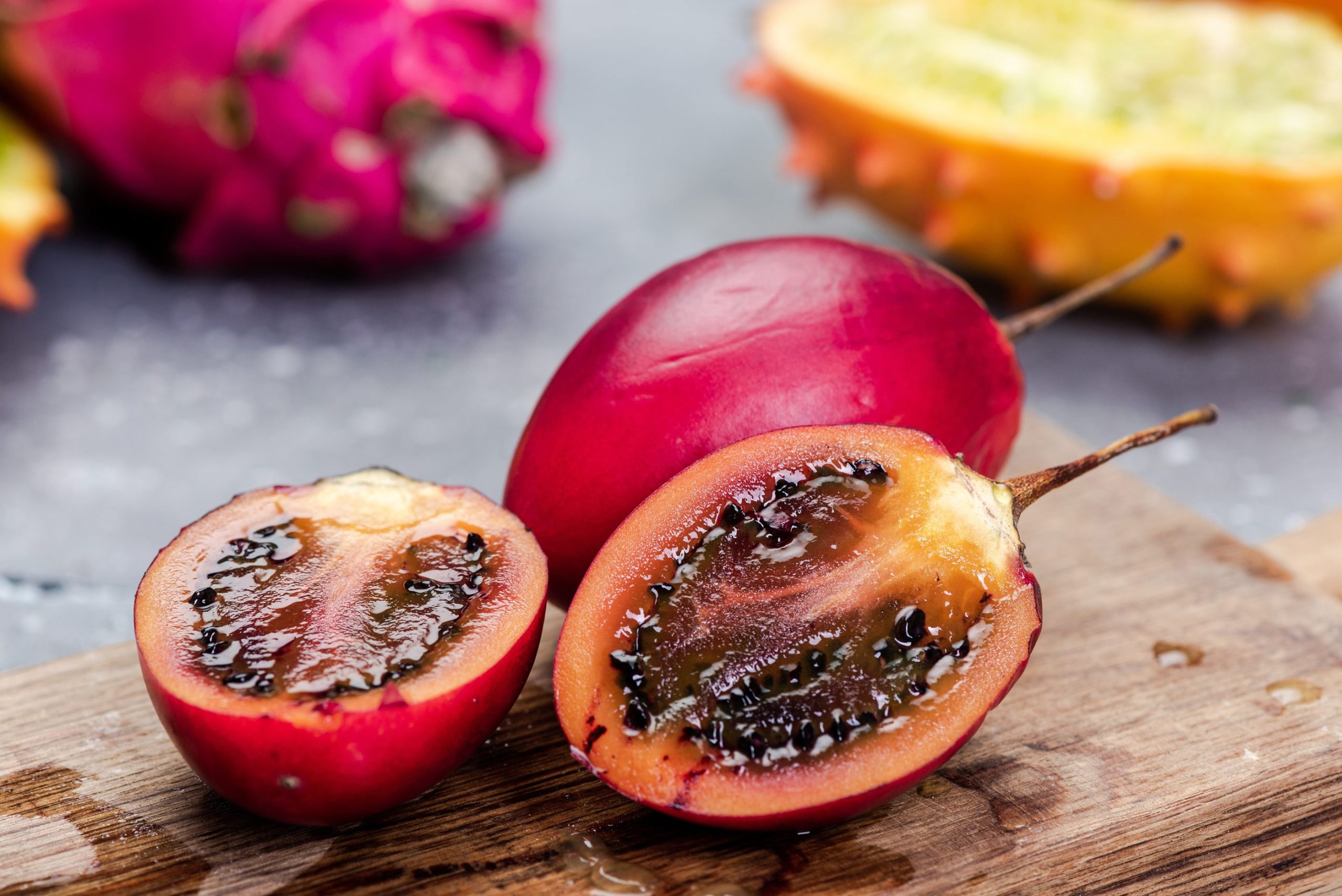
While Tomate de árbol literally means “tomato of the tree,” and this fruit resembles a Roma tomato, it is unrelated to the tomato and is rarely eaten fresh. A thick-skinned fruit encasing orange, dark red or purple pulp, it can be blitzed with sugar and water to create a sharp, tangy drink. Once the skin is discarded, the pulp can also be used in hot sauces, juices, ice creams, and desserts.
Naranjilla
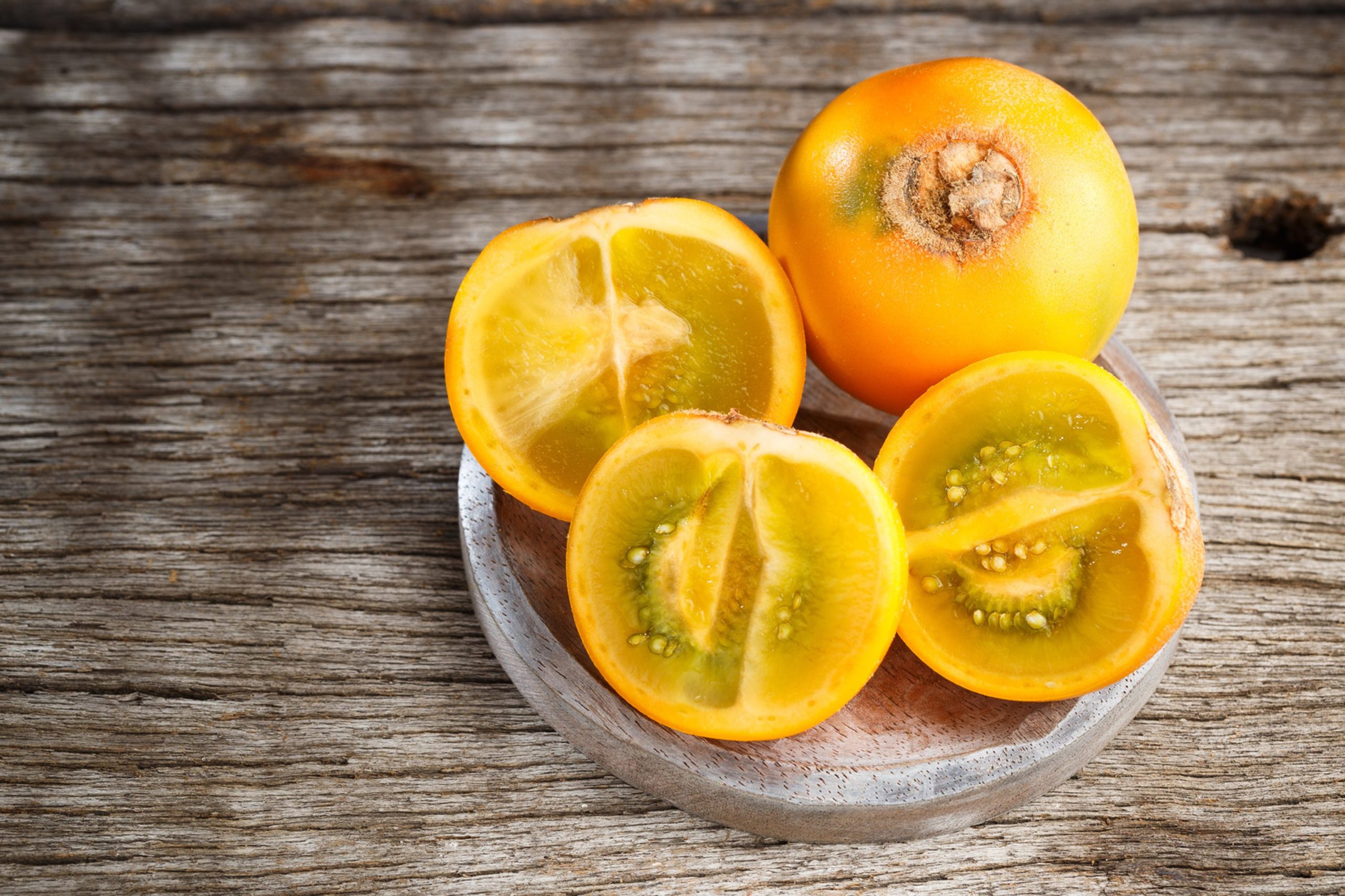
Naranjilla is native to Colombia and Ecuador and is often compared to a small naranja (orange) due to its orange color. Confusingly, however, it is less of an orange and more of a tomato – confusingly, unlike tomate de árbol, it actually is related to the tomato family. Cutting into this round fruit reveals four compartments filled with light orange flesh, juicy green pulp and seeds. Naranjilla is rarely consumed raw but used in recipes as diverse as juices, cocktails, cakes, ice cream and meat stews. It has a citrus taste with hints of pineapple, lemon, lime and rhubarb.
These are just a selection of the exotic Ecuadorian fruits our chefs have at their fingertips. Our teams of gastronomic gurus take great pride in sourcing fruit locally and whip up delicious fruit-based recipes at breakfast, lunch and dinner.
Got juice
Fruit juices (jugos) are always popular in Ecuador and the Galapagos, and our chefs like to ensure that fresh and zesty juices are constantly available to our guests. Breakfast and snack times are enlivened with energizing, refreshing juices ranging from orange, strawberry, blackberry, and guava to soursop, tree tomato, passion fruit, and naranjilla – as you can see, the range is extraordinary! Our lavishly sweet, creamy batidos (milkshakes) are also extremely popular.
Top banana
Some of our mouth-watering fruit-based desserts – just to tantalize your taste buds – include banana foster, apple crumble, and lemon cheesecake, plus fruit platters galore. Picture strawberry shortcake, Crema Catalan flan topped with fresh strawberries and millefeuille with diplomat cream and berries and you’re en route to locally-sourced, sustainable culinary heaven.
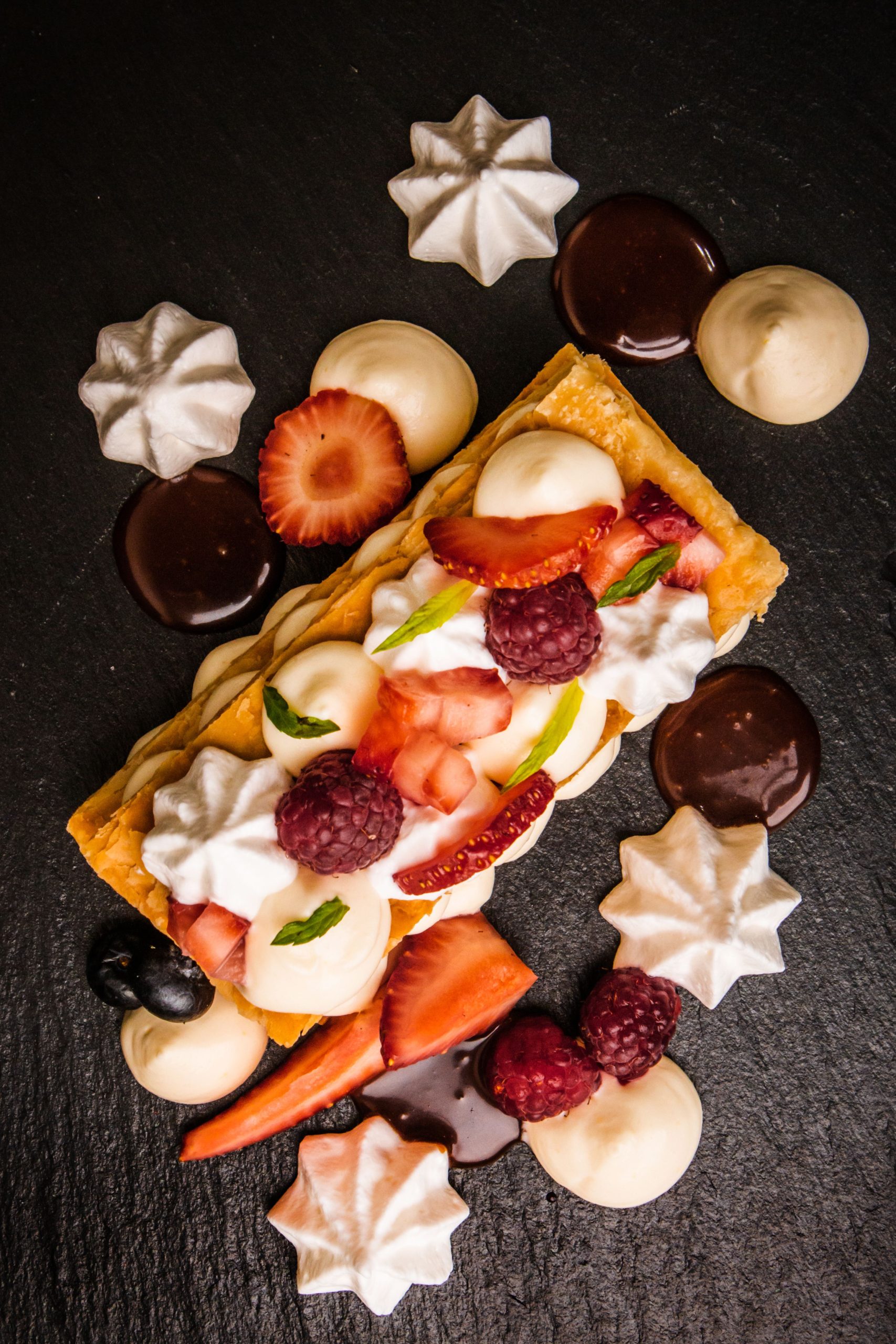
Exotic fruits are also cleverly woven into many of the savory dishes we serve on board – our trout carpaccio with cucumber, avocado and capers positively bursts with passion and zing when drizzled with passionfruit dressing.
The beef fillet, served with truffle “chaucha” potatoes, asparagus and fragrant tamarind chimichurri is as exquisite as it sounds, while you’ll be hard pushed to beat our pork pancetta nestling beneath guava and spiced pineapple barbecue sauce accompanied by baked sweet potato purée.
A particular favorite of Evolve chef Estuardo is the Grand Marnier–marinated melon wrapped in prosciutto – a mouth-watering combination of sweet and savory combined into an elegant starter.
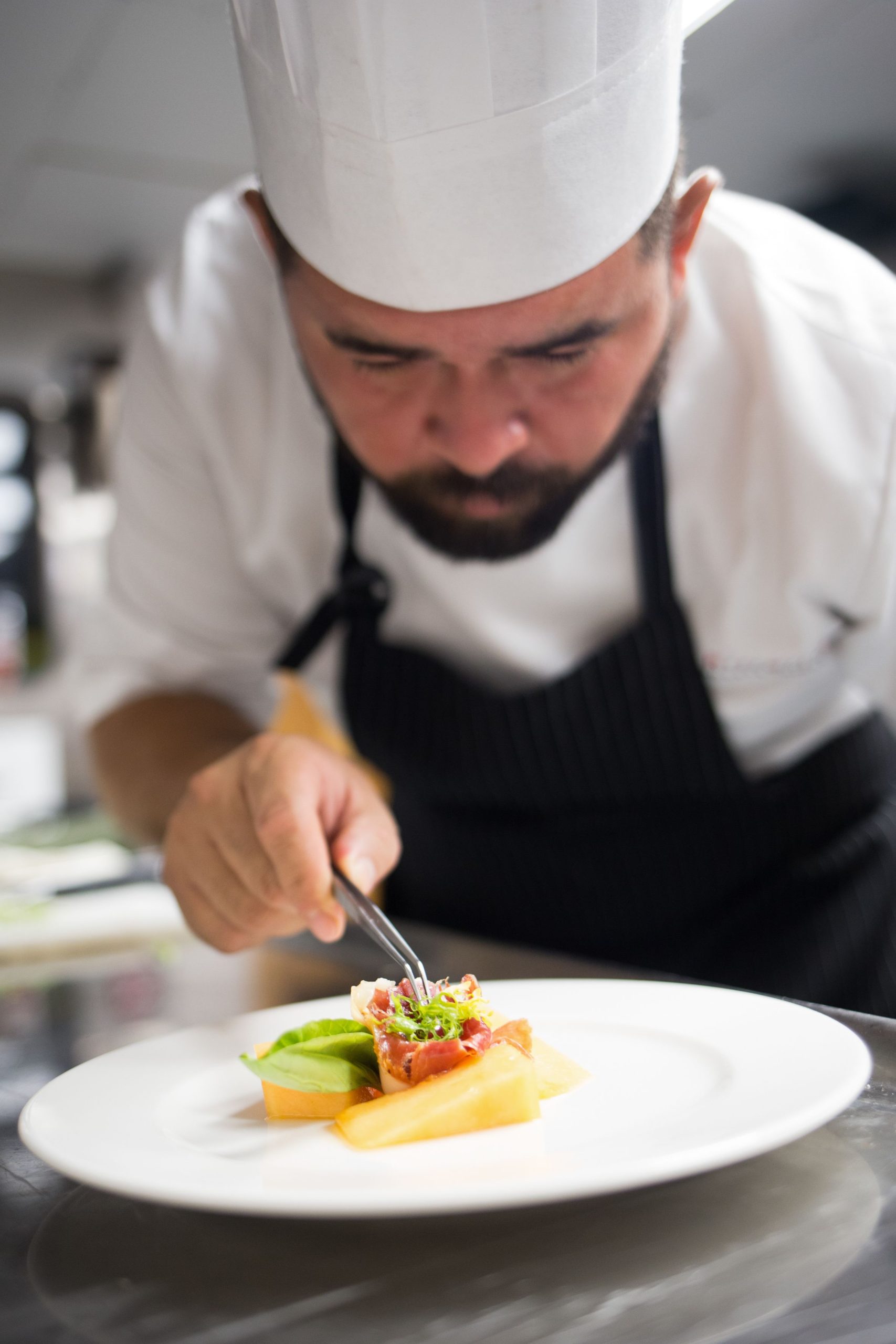
One of our chefs on board Theory – Cristhian Murrieta – enthuses: “One of the fruits I most enjoy working with is guava. Its standout feature is its intense and floral aroma, coupled with a very fruity and sweet flavor. It pairs exceptionally well with savory dishes, which is why we incorporate it into the pork pancetta dish, one of our five-course dinner offerings on board.”
Tasting is believing, and the above may well have whetted the appetite – get in touch with the team to find out more about the exceptional locally sourced produce we love to serve up on the high seas!




